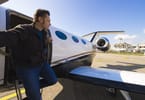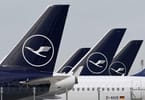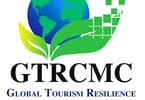This is both a bad news and a good news story. The bad news is that the airlines continue to disassemble the services that were, once upon a time, delivered to consumers in one nice neat transparent package.
Historically, making an airline reservation and paying for the ticket was similar to other shopping experiences. Buying a movie ticket? The ticket included entrance to the theatre, open seating (first come, first choice), a cushion to sit on, the use of the toilet, as well as the performance. Buying a pair of sneakers? We would leave the shop with the sneakers as well as the laces. Buying a car? The price included the transmission, windows, steering wheel, seats, doors, locks, etc.
Airlines Transform the Shopping Experience
The airline industry has found the way to change the entire purchasing structure and shopping experience, creating a nightmare for consumers.
Currently when an airline purchase decision has been made, the only item purchased is the privilege of getting on the plane! To actually have a seat (the middle seat is the default option) there is likely to be an additional fee attached. We can look forward to additional charges for seat location (proximity to the cock pit), size and fabric of the seat cover, micro-inches of additional leg room, steps to the toilet, willingness to assist other passengers in case of an emergency, and access to the light/ventilation switches (which are curiously placed over the middle seat giving the person seated in the middle – a middle seat advantage), plus taxes and fuel charges.
Of course, there are the additional before departure fees (i.e., baggage size and numbers, priority boarding), as well as on-board fees (i.e., food, snacks, beverages, Wi-Fi). There are occasional rumors that additional fees are being added for use of the toilet; so far, no airline has put a meter on these doors. I still have not read of an exit fee or a tarmac charge (the amount charged to actually get off the plane and enter the airport), and the airports have not started to collect fees for entering and leaving their property (just give them time, I am sure they will catch up).
No Transparency
In addition to being nickeled and dimed to death, consumers are placed in the awkward position of having to agree to pay for this product at a transaction point that offers little or no clear and precise assessment of what the charges are (how much for the ticket, the seat, the taxes) – until it is too late to leave the shopping cart behind. Heaven forbid there is a need to cancel or modify the reservation: forget about it! Dresses and shoes purchased at Bloomingdale’s can be exchanged/returned even if they have been worn. Make an error on an airline ticket, and the consumer is levied a heavy fee for a time/date change or modification, if permitted at all!
Retail Heaven
When customers shop and return time and again to Amazon the technical interface gives both the vendor and the customer a virtual link. Thanks to cookies and other techno-advances that I do not need to know about, when I decide to visit the Amazon site my name appears at the top of the screen welcoming me back.
I do not have to provide my frequent shopper number, demographics, or psychographics; I do not need any credit card information; and I am free to browse to my heart’s content. Amazon also provides me with guidance: Like this book? Then you are also likely to like these other books; people (similar to you) have purchased them, and they are happy campers (read their comments, typos, and all). All of this happy shopping occurs because Amazon already knows ME (especially if I have made purchases on the site before). Based on my shopping selections they know the size I wear, the colors I prefer, my family status, and the price point for my shopping decisions.
Trying to get into an airline site is like trying to get into Fort Knox. Not only do I have to provide my name, I have to include my frequent flyer number, telephone number, and a whole wealth of information that I may (or may not) have available or have the time to enter. If Amazon and Bloomingdale’s knows who I am as soon as I show up at their website, why not the airlines? Just try to get an airline on the telephone – it is easier to speak to an orbiting astronaut. American Airlines recently placed me on a 45-minute hold pattern, and then I was told that my request for a seat change would have to wait until I arrived at the airport. (Yes, I tried online before I picked up the telephone).
Preparing for Change
There is a new product that is predicted to change the way that airlines demonstrate customer service. Developed by the Farelogix high-tech organization, their Airline Commerce Gateway is a system that makes consumers think that the airlines are finally interested in who they are, their destination and departure time preferences, seat locations, and food allergies (if any). It is fortunate for us all that the techno-geeks are flying around the planet and, prompted by their unhappiness with the airlines, they have taken their talents and created a new “skin” that should make the reservation experience easier and faster.
More Than Lipstick on a Pig
The airlines are redefining what they do, but they are very slow to amend the error of their ways! They have decided that they are not in the service business but rather are retailers and selling products. Using Amazon as the benchmark, the airlines that adopt the new Farelogix technology will identify the historical patterns of the customer (database mining) with current demands/requests. Whether the customer is accessing airlines on their laptop or a mobile device, the interface with the airline will be the same. Once the customer and airline are linked, there will be no separation until the customer has successfully landed at their intended destination.
From searching and making the reservation, through check-in to seat selection, purchasing in-flight services (i.e., food, drinks, Wi-Fi), the new Gateway technology will enable the Passenger Name Record (PNR) to be self-service, including flight /time/date changes/exchanges, ancillary purchases, etc.
Catch 22
Although Jim Davidson, President and CEO of Farelogix, has created a product that takes some of the sting out of interacting with the ineffectiveness of the airline, it is still up to the individual airlines to raise their hands (and open their checkbooks) to adopt this new technology.
Davidson recognizes that some of the airlines will not want to acquire the entire customer service system immediately (how could they possible deal with happy customers?); fortunately he is willing to start them on the road to nurturing an improved customer/vendor relationship. Davidson suggests that his new Gateway product be introduced incrementally, i.e., Reservations, Departure Control, and Loyalty. The airlines could start providing these customer services without dumping their entire antiquated legacy system.
The Airline Way or the Passenger Way
More than 8.1 million people boarded commercial flights (each day) in 2012. The airlines have their dinosaur-age method of doing business, and then there is the consumer who shops, plans, reserves, and buys airline products in a completely different environment, thereby creating a disconnect between the airline and the passenger.
Google analytics indicates that a typical traveler uses 22 websites to research a trip (in multiple shopping sessions) before making a decision. The potential consumer who is not brand loyal will search through Kayak.com, Google, Orbitz, Travelocity, etc. before coming to a conclusion.
Davidson finds that folks using third-party websites are unable to get all the information they need to make a fully-informed decision. Online agencies may not inform travelers that journeys requiring multiple carriers could have better fares if the selected carriers were within an alliance. They may not know that they can purchase Wi-Fi, in-seat power, on-demand audio/video, drinks, whatever, in advance of the flight (and at what price).
According to Davidson:
1. Consumers want simple, straightforward planning and booking processes. Choices and prices must be at their fingertips (or thumbs).
2. Passengers want to customize their flights the same way they personalize their morning coffee choices (Starbucks offers 87,000 variations of its products).
3. Airline executives have got to pay attention to Concur (since they acquired TripIt in2011) to gain access to massive volumes of customer data and insights that will be available for sale (i.e., market share, fare paid, purchase channels used).
4. Apple’s Passbook can store a traveler’s loyalty program account information, boarding passes, coupons, etc. – creating a media and financial toll booth that airlines will have to pay for if they want to reach their passengers.
5. Facebook (one billion users worldwide), a powerful site for data aggregation, will be monetized through real-time bidding algorithms that will pit airlines against intermediaries to reach travelers.
6. Google participates in almost every aspect of airline distribution, ecommerce, and marketing and as such can force an airline to use a certain product to reach consumers.
7. Amazon (world’s retail marketplace) is positioning itself to be a factor in how airlines sell and how passengers buy air and travel.
What Happens Next
Davidson is optimistic. He believes that the airline industry will cease being myopic and willingly look at other industries for inspiration and ideas. Eventually they will realize that they have to change the way they do business, and the use of eCommerce will move to the top of their priority list. He also believes that the airlines will invest in creating customer data warehouses, acquire the relevant technology to do this, and hire employees who are skilled in analytics and data visualization.
We Can Hope
If the Davidson observations are correct, and the airlines do adopt his technology, the end result may be an airline industry that can present relevant, tailored offers and prices to travelers or travel agents shopping for flights in a manner that makes for a happy customer instead of a satisfied airline executive.
WHAT TO TAKE AWAY FROM THIS ARTICLE:
- In addition to being nickeled and dimed to death, consumers are placed in the awkward position of having to agree to pay for this product at a transaction point that offers little or no clear and precise assessment of what the charges are (how much for the ticket, the seat, the taxes) – until it is too late to leave the shopping cart behind.
- We can look forward to additional charges for seat location (proximity to the cock pit), size and fabric of the seat cover, micro-inches of additional leg room, steps to the toilet, willingness to assist other passengers in case of an emergency, and access to the light/ventilation switches (which are curiously placed over the middle seat giving the person seated in the middle – a middle seat advantage), plus taxes and fuel charges.
- I still have not read of an exit fee or a tarmac charge (the amount charged to actually get off the plane and enter the airport), and the airports have not started to collect fees for entering and leaving their property (just give them time, I am sure they will catch up).


















![China's Hyperloop Train: A Glimpse into the Future of Transportation 16 Travel Tourism News | Domestic & International Hyperloop Train China [Photo: Hyperloop Transportation Technologies]](/cdn-cgi/image/width=145,height=100,fit=crop,quality=80,format=auto,onerror=redirect,metadata=none/wp-content/uploads/2024/02/180720163348-hyperlooptt-china-capsule.jpg)



